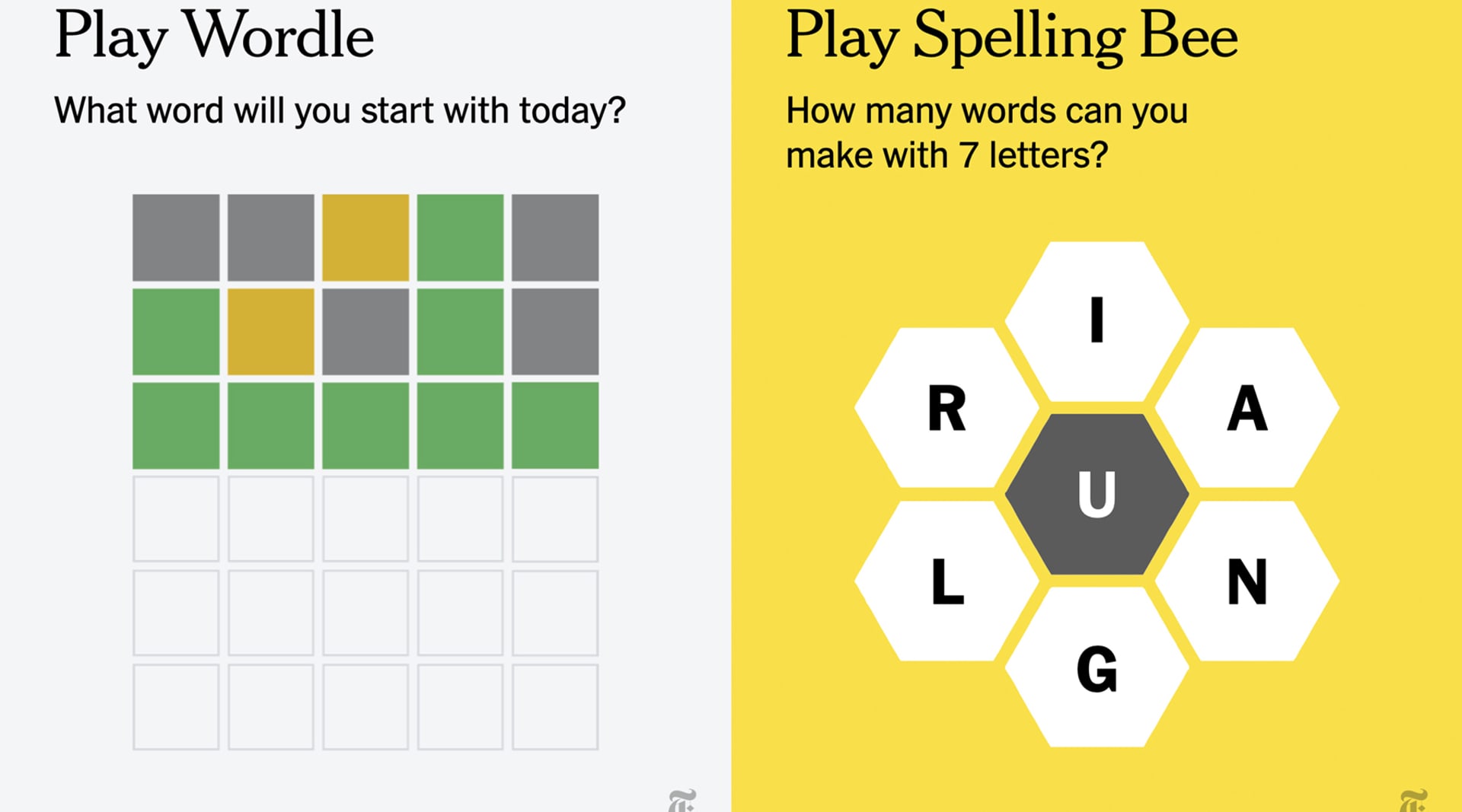Media moguls are chasing younger generations, providing elevated resources for news and expanding their information services into new frontiers.
The New York Times is growing its gaming offering to improve subscriptions. “Our focus this year has been growing that games business, thinking of Wordle as an incredible opportunity to introduce all those people to our games,” New York Times head of games Jonathan Knight told Digiday. With game-specific or full editorial subscriptions, however, readers can access more popular games and higher-level versions of their free trials. In a press release in March, the Times reported “unprecedented tens of millions of new users” following Wordle’s acquisition.
To promote its daily Spelling Bee, the New York Times is leveraging digital subway ads to unlock the game in a campaign that bridges screens and in-situ ads. Riders can play by scanning the QR code displayed on the ads—incentivizing subscriptions.
The Times is further incentivizing engagement for younger generations: if players who receive a “Genius” or “Queen Bee” status share their score using the hashtag #beetime and tagging @nytgames, the Times will donate $1 (up to $500,000) to First Book, an organization that distributes educational resources to those in need.
ESPN is launching a creator network to attract more gen Z consumers. The ESPN Creator Network, as it’s aptly named, will give 10 creators priority access to ESPN’s premier sports properties and resources beginning this October. “What we’re continuing to see from our sports community on social channels increasingly is this gravitation toward first-person, authentic content creation,” ESPN’s VP of Social Media Kaitee Daley told Front Office Sports.
“We feel like this program can help us understand a little bit more of that depth and connect with more niche sport fan communities that thrive on TikTok, Instagram, et cetera, and with these creators who are at the earlier stages of building their communities.”
In September, the New York Times called TikTok
the “new search engine” for gen Z, recognizing that young adults are going to social media outlets for their primary source of information. Now, the New York Times and ESPN are reconnecting with a younger consumer base by leveraging creative outlets, providing new sources for news, and expanding their specialties into new frontiers.


